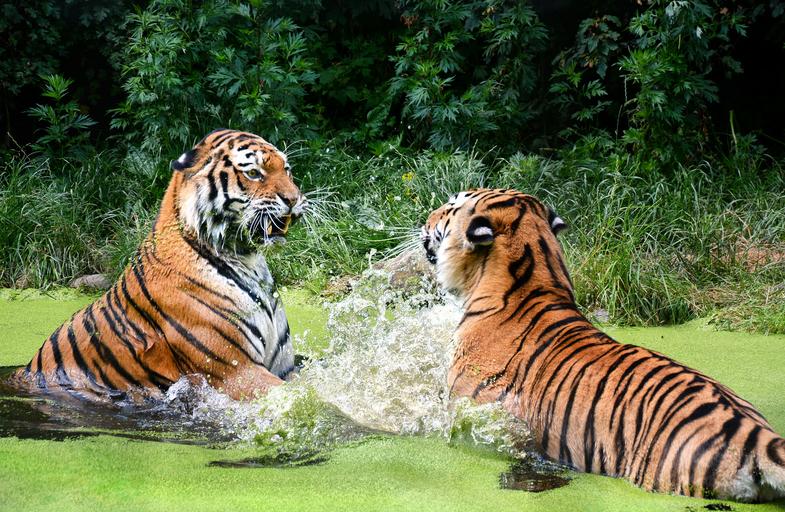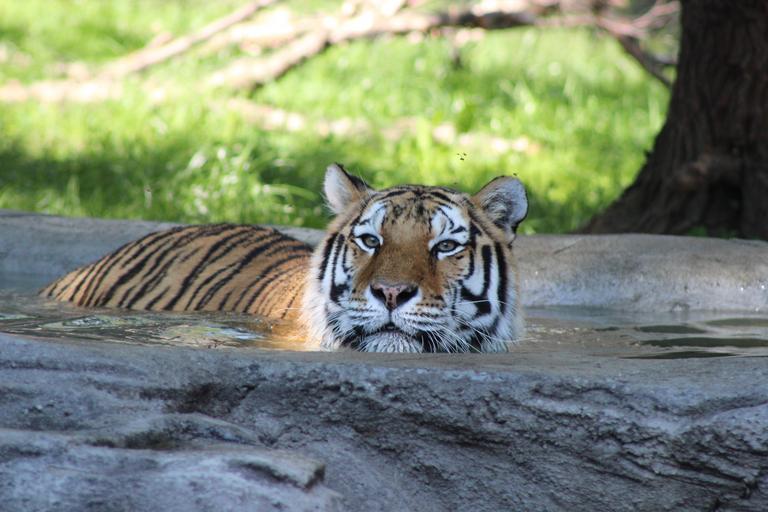Paws and Play: Tigers Splashing Around
Tigers Splashing Around
Tigers are majestic creatures that have captivated humans for centuries. With their striking appearance and powerful presence, they have become symbols of strength and beauty. While we often associate tigers with the wild and untamed, there is a playful side to these magnificent animals that is often overlooked. In this article, we will explore the fascinating world of tigers and their love for splashing around.
The Joy of Water
Tigers Splashing Around: Contrary to popular belief, tigers are not afraid of water. In fact, they are excellent swimmers and are known to spend a significant amount of time in the water. Tigers have been observed swimming across rivers and lakes, sometimes even covering distances of up to 6 kilometers. This ability to swim allows them to access new territories and hunt for prey more effectively.
But tigers don’t just swim for survival; they also do it for fun. Tigers are known to engage in playful behavior, and water is often a central element in their games. They can be seen splashing around in ponds, rolling in the water, and even diving in headfirst. This playful behavior is not only entertaining to watch but also serves as a form of exercise and enrichment for the tigers.
Tigers Splashing Around: Enrichment and Exercise
Enrichment is a crucial aspect of animal care, especially for animals in captivity. It involves providing animals with stimulating environments and activities that mimic their natural behaviors. For tigers, water play is an excellent form of enrichment that helps keep them physically and mentally stimulated.
Water play provides tigers with a unique sensory experience. The sensation of water on their fur and the sound of splashing can be both stimulating and soothing for them. It also allows them to cool down during hot weather, as tigers are known to be more tolerant of heat than other big cats.
Furthermore, water play is a great way for tigers to exercise. Swimming and playing in the water engage their muscles and help them maintain their agility and strength. It also provides them with an opportunity to practice their hunting skills, as they can chase after floating objects or dive underwater to catch prey.
Conservation and Education
Aside from the joy it brings to tigers, water play also serves a greater purpose in terms of conservation and education. Zoos and wildlife sanctuaries often use water play as a way to educate the public about tigers and their natural habitat.
By showcasing tigers engaging in water play, visitors can gain a deeper understanding of the species and the importance of preserving their natural environment. It also helps dispel common misconceptions about tigers being solely fierce and dangerous animals, showcasing their playful and curious nature.
Moreover, water play can be used as a tool for research and conservation efforts. Studying the behavior of tigers in water can provide valuable insights into their physical capabilities, social dynamics, and overall well-being. This knowledge can then be used to develop better conservation strategies and improve the welfare of tigers in captivity.
Conclusion
Tigers Splashing Around: Tigers are not only fierce predators but also playful creatures that enjoy splashing around in the water. Water play serves as a form of enrichment and exercise for tigers, allowing them to stay physically and mentally stimulated. It also plays a crucial role in conservation and education, helping raise awareness about the species and their natural habitat.
Next time you see tigers splashing around in the water, take a moment to appreciate the joy and beauty of this playful behavior. It is a reminder that even the mightiest of creatures can find happiness in the simplest of activities.
Get Up Close and Personal with Exotic Animals at Turpentine Creek Wildlife Refuge in Eureka Springs





